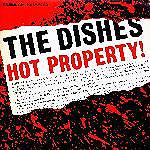
|
Diva Diaries
Carole Pope
Rough Trade, & the Queen West scene
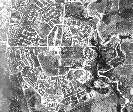
SPAWNING SURPRISES
Don Mills, Canada's "first corporate suburb," born 1952 (aerial shot from Toronto Modern Architecture, 1987)
Neither Carole nor Sky (nor I) was born in Canada, though they made their way here younger than I. Sky arrived at 12, from the USA; Carole as a child of "the verdant rolling hills" outside Manchester, England.
Jack Pope, Canadian, had moved there in the 1940s; out ballroom dancing he met a beautiful dark eyed blonde and married her. Celia had been in British musical theatre; among Jack's gigs: circus stilt-walking. "He was, quite frankly, wacko," Carole says, "always running some kind of scam."
His family was run around, too: Montreal; a burg near Hamilton; all over Toronto, from the west end to "the depths of Scarborough." One locale she had in common with Sky: Don Mills. "The landscape was flat and monochromatic, relentless in its conformity," she writes. "I moved away from home when I was eighteen."
Sterile burbs can bear strange fruit, Toronto's oddly abundant. Among Carole's school mates: Russell Craig Eadie, later drag diva Craig Russell; Klaus Kassbaum, who went on to play bass with Steppenwolf; and "the requisite stacked sexy blonde girl with attitude oozing out of her pores" -- muse of Carole's most famed lyric, in her biggest pop hit, "High School Confidential": "She makes me cream my jeans when she comes my way."
(The line was widely banned from radio play. Toronto's CHUM-FM once paid her to re-do it: "She makes me mmm...." A friend suggested: "She makes me order Chinese food when she comes my way.")
Carole Pope shares Scarborough not only with Jim Carrey and Mike Myers, but The Biffs. A cute boyband before the term was coined, they regaled us in the late '70s at Queen West's Beverley Tavern with songs about shopping malls. Tony Malone of Drastic Measures (who could make mere drums, keyboard and guitars a mad circus calliope; you'll hear more of them) gave us "Don't Play with TNT, Play with Me" -- "In the basements / the little kids struggle / to plan attacks on the dying plazas / wreaking havoc on man and wifey / light the fuse of TNT." *
Carole wanted to go to the Ontario College of Art; Jack said no. She worked (very) odd jobs, got her own place on Huron Street in the Annex, hung out at clubs like the Mynah Bird and the Purple Onion, with Ritchie Havens at the Riverboat "to see the tiny, barely formed Joni Mitchell" -- Yorkville in its hippie heyday. One short-lived.
- "Greedy real estate entrepreneuers were starting to conspire against us. We, the villagers, were sick of gawking tourists traipsing through our special place, destroying the love vibe. In the Spirit of the Love Generation, hundreds of us gathered one day and sat in the middle of Yorkville Avenue chanting, "Close our street," over and over. The cops were not amused. They came at us on horseback. ... Beneath Ontario's calm WASP exterior beat the heart of a police state."
Sometimes she cruised elsewhere, then and later.
-
"I was on a secret mission to find out where the dykes were. I'd walk along Toronto's garish Yonge Street strip, muttering under my breath, 'Oh God, Oh God, where are they?' I'd skulk past the foul-smelling bar called the St Charles. I knew that's where the boys went. I felt like a frustrated sexual freak."
"In 1975, there were two dyke bars in Toronto. The Cameo [her other the Carriage House] was way out in the east end, on the Danforth, frequented by butch women with names like Bobbi, dressed in pastel coloured leisure suits, drinking beer. When Jane and I went to check it out, we sat in a corner and vacillated between being amused, disappointed and slightly horrified.
"We didn't get it. We'd been expecting Paris in the thirties...."
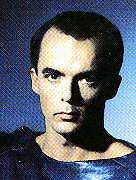
GORGEOUS BOY-MAN
Kevan Staples: Scent of suede; later leather & Rough Trade. This shot from (for those who think young), 1981 -- but Kevan seemed never to age

DIRECT TO DISK
In limited edition (my own copy #0019003), cut live in 1976
Carole did do it with a few boys. "It was," she wrote, "like a formality we had to get out of the way before we could become friends." (Sounds familiar.)
Auditioning for a band in 1968 she met one who'd be more than a friend -- "this gorgeous boy-man with blue-black hair and an aura of sweetness." Kevan Staples. They were lovers briefly ("his flesh had an undefinable scent -- something like suede -- that turned me on"), but sex, Carole says, wasn't a big motivation between them. Partnership was. Creative partnership. They started a band.
It was first called O -- Carole's idea, from The Story of O. In time they were The Bullwhip Brothers. Then Carole had another literary inspiration.
- "I was obsessed with homosexuals and their lifestyle. I read novels by John Rechy. All his books had the same theme; the idea of gay men being validated as sexual beings by how many times they got fucked intrigued me. I loved the whole leather bondage image of big, butch, Tom of Finland like gay boys. The first time I heard the term Rough Trade I knew it was the perfect name for our band."
In the summer of 1976, at Nimbus Nine studios on Hazelton Avenue in Yorkville, they cut an album direct to disc: "fifty three takes of eight songs, both sides of the record, in two days." The audio mag Absolute Sound still lists Rough Trade Live as "one of the best pop albums of all time." And likely most rare: it was a limited edition, just 30,000 copies. I've still got mine (if purely archival: I can't play discs now, my turntable long gone).
Their "most infamous gig," Carole writes, was also in 1976, "six nights a week, three shows a night, for nine weeks," at the Chimney. I knew the spot, upstairs at Yonge and Dundonald, if better later on: from 1983 if for too few years it was Cornelius, a bar you can find in the 1984 chapter of Promiscuous Affections.
But as you'll see I'd been there before, twice; I'd thought a full decade before. But once must have been 1976. "Wherever I go in this world people come up to me and claim they were at one of those shows," Carole writes. I join the claimants: I was at the Chimney for Rough Trade -- "rough enough, I hoped, to scandalize a younger cousin up from Ohio (even if he had got here on a motorcycle with his girlfriend on the back)." I needn't have worried:
- "Kevan and I commandeered the stage, all sexy and sulky, tricked out in our little outfits. Kevan would dress like a sailor or a pimp. I went for saucy bondage attire. I wore a skin-tight, black, pseudo-leather rig with a harness and fetish heels that I could hardly hobble across the stage in, or I opted for tight silver Fiorucci leather pants and a punk T-shirt with a lurid boy-on-boy S&M scene depicted on the front."
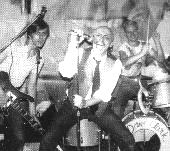
NOT ROUGH TRADE
But you get the General Idea. "Famous, glamorous artists" Felix Partz, Jorge Zontal & A A Bronson pull a gig

NOT LIFE
Though its logo long aped it -- 'til TimeLife had a fit. This issue from the real 1984
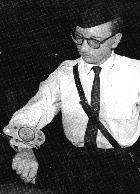
GEEK CHIC
David Buchan -- aka Lamonte del Monte, arbiter of fashion -- checks out fame's fleeting minutes. Photo: George Whiteside, 1981
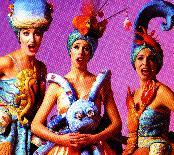
HAVING YOURBABY?
The Clichettes, this incarnation making a 1986 cover of Toronto Life
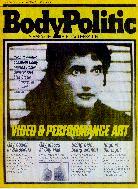
BEEP DOES QUEEN WEST
Colin Campbell as "stunned punkette" Robin in his Bad Girls, promoting four pages in the June 1980 issue on video & performance art. Stunned too: not a few homos beyond the nabe
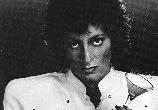
GENERAL DIRECTION
|
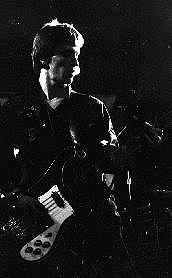
DRASTIC: HOW'RD
Baby brother Pope on stage with Drastic Measures, a shot I took at The Horseshoe
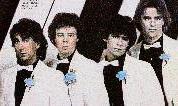
DRASTIC: NO HOW'RD
Drastic Measures, 1980 (Tony left; Steve Webster 2nd right), How'rd putting in just a cameo on the flip side
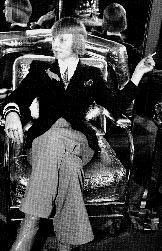
PATRONESS
Sandy Stagg, proprietor of the Peter Pan, the Fiesta, & "seventies updates of the salons of the demi monde." Photo: Rodney Werden, 1973
Playing Grossman's Tavern on Spadina Avenue in the mid '70s, Carole noted the presence of three unusual guys. "They walked into the bar and scanned the room like artists do, looking for useful material to archive in the back of their minds."
Archivists indeed, of everything from modern culture's detritus to its high spectacle -- the two often hard to tell apart. Which, often, was their point. Painter Ron Gabe, architecture students Jorge Saia and Michael Tims -- recast as Felix Partz, Jorge Zontal, and A A Bronson -- had morphed from three artists to one: General Idea.
"GI operated as a collective, recruiting other artists into the fold," Carole writes, "but the core and real creative brilliance came from the boys. ... They were so in synch with each other that the body of work they produced seemed to flow from one mind." In 1975 they started their own magazine, FILE, in that year's "Glamour Issue" stating their credo:
-
"We wanted to become famous, glamorous and rich. That is to say we wanted to be artists and we knew that if we were famous and glamorous we could say we were artists and we would be.
"We never felt we had to produce great art to be great artists. We knew great art did not bring glamour and fame. We knew we had to keep a foot in the door of art and we were conscious of the importance of berets and paint brushes. We made public appearances in painters' smocks.
"We knew that if we were famous and glamorous we could say we were artists and we would be. We did and we are. We are famous, glamorous artists."
They were. General Idea won international fame, surviving 26 years from its birth in 1968 to 1994, when both Jorge and Felix died of AIDS.
Their highest spectacle was The 1984 Miss General Idea Pageant, an event endlessly rehearsed but never held, its venue destroyed in a mythical fire. A cover of FILE featured the boys soot smeared: "General Idea flees the burning pavillion in 1984" -- one image of many in "1984: A Year in Pictures." The issue, celebrating GI's 10th anniversary, was published in 1978. At one Miss GI rehearsal, "Going Through the Motions" at the Art Gallery of Ontario, Rough Trade performed.
-
"The pageant 'contestants' glided along a runway dressed in venetian blind like structures -- three triangles of metal piled on top of one another like fifties lampshades. The model's bare arms poked out of the slats. We wrote two songs for the occasion ... one with a latin beat that went like this: 'Sylvia Plath getting gassed, Warhol getting shot by Solanis, I like it, I like it, but is it art?' ...
"Actors stood in the lobby playing celebrities being interviewed by other actors portraying the media."
Carole asked GI to help create an image for Rough Trade. They art directed many of the band's album covers, their first Avoid Freud. "Wearing Thierry Mugler suits with massive moulded shoulder pads, with our flesh bronzed and then literally air brushed with makeup, we were made over into beautiful iconic beings."
"Glamour was always part of their credo; their art was devoted to redefining it and making it their own," she writes, quoting another treatise from FILE:
- "We knew that in order to be Glamorous we had to become plagiarists, intellectual parasites. We moved in on a history and occupied images, emptying them, reducing them to shells. We filled these shells with glamour, the cream puff innocence of idiots, the naughty silence of shark fins slicing the waters."
General Idea was the heart of much more than its own body of work. They were at the centre of a vibrant social body, an entire artistic scene -- embracing plastic and performance arts, music, video, photography, publishing and, as necessary (it often was), political action.
The scene was a true demi monde. It had its own resources: V-Tape; Art Metropole, GI's literal archive; scads of edgy galleries. Its own art / politics mags -- Shades and Strike if briefly; Parachute; Parallelogramme; Centerfold, later FUSE, still alive; by artist connections the feminist journal Fireweed -- and of course FILE.
It had its own stars, they their own means of PR, FILE's pages hotter than Zena Cherry's society column in The Globe and Mail. It was, as artist Colin Campbell said in 1978, "more downtown than Petula ever intended."
It had its own bars, bistros, hangouts, even (modest) haute cuisine -- often served up by stars making a living, as stars long have, waiting tables. At Greg Couillard's fabulous Parrot, your brunch oeufs en cocotte might be whisked to the table by Billy Panko, his fine Aryan blondness familiar from a poster, as General Idea's "wear a moustache" (white) "Nazi Milk Boy." Or by Louise Garfield or Janis Hladki -- two thirds of The Clichettes, known for '60s "girl group" parodies. Boy groups, too. They once opened for Rough Trade:
- "The girls came out wearing flesh-coloured costumes of naked male rock stars, with hand-stitched penises attached to their bodies with Velcro. ... One of the highlights of that show was their interpretation of the Paul Anka tune, 'You're Having My Baby,' which they sang in male drag."
Carole doesn't mention the rock shock finale: cocks ripped off in a quick zip of Velcro and brandished over their heads.
Finally, that scene had its own turf, forever making famous -- if less glamorous now, the scene gone to history -- that stretch of downtown Toronto known as Queen West.
The name was no fancier than its main drag, Queen Street West. Real estate types later tried to christen it "Soho" (there was a Soho Street, flanking a car park on Queen for just a block), the same types who called Queen Street East, full of antique shops, "The Lower East Side." So imaginative. Marketers of chic ever disdain local reference. True locals often called their neighbourhood simply "the nabe."
In 1976, another collective found Queen West. By fluke. That was well before its fame had spread; they were simply looking for cheap space. A mundane requirement -- and one vital. Low rent digs have long been home to art and action on the cutting edge. Thus did The Body Politic, a pioneering gay lib rag born in 1971, come to live not in a gay ghetto but an artists' enclave -- a fluke that would shape its fate. Just how you can see in Promiscuous Affections, 1977 and beyond.
And thus for a decade, from 1977 when I arrived at The Body Politic to 1987 when it died, I was an accidental denizen of Queen West. And a blessed accident it was.
- "In the late '70s the Toronto music scene was incendiary. A punk club called Crash and Burn on Pearl Street imploded into business. The bar was a door sitting on two garbage cans, at which only Molson's Black Label was served, a punk aesthetic, perhaps.
"Making an anti-establishment statement, the club sometimes forgot to charge admission. Bands like the Dead Boys, the Dishes, the Curse, the Diodes, the B Girls, Martha and the Muffins and the Viletones all vented their caustic, warped sensibilities there."
The Crash had opened in 1976 at 15 Duncan, corner of Pearl, just down the street from The Body Politic then newly ensconced at 24. We knew the place better as the Centre for Experimental Art and Communication, CEAC, a key player Amerigo Marras, who'd been around for The Body Politic's birth.
CEAC got lots of government bucks, enough as I recall to buy the building. A lovely man I'd once bedded in Ottawa dropped by TBP's office one day, on his way to CEAC. Turned out he was their Canada Council grant officer -- agent of nearly all that dough. He said to me: "I'm not sure about those guys. Do you think they're... serious?"
His quandaries were soon put past: CEAC's magazine Strike ran an article backing the Italian Red Brigades, their trademark act against oppressors: "kneecapping." The media loved it. The only time I was ever at CEAC, with Gerald Hannon, was for their press conference during that flap -- finding it nearly as bizarre as the real press did.
Black Label may have been punk aesthetic: black was the scene's fashion statement (and still good enough for me, lacking any fashion sense). But once Molson's put up big billboards, not a few in the nabe, announcing "The Legend is Black" everyone switched to Canadian. That was the working man's brew, as Black had been -- hence its original trend value.
I never did see the Crash 'n' Burn (as they had it). But I did see the Dishes, the Diodes, and Martha and the Muffins, up on Queen and upstairs, at the Beverley Tavern. I loved The Bev, as you'll see in Promiscuous Affections, 1978.
I also saw The Horseshoe Tavern down the street a few times, one night for Rough Trade, opening for a band I'd never heard of and didn't stay for -- thus missing my one chance to see Talking Heads live.
I saw lots of bands at The Bev: the Everglades; TBA (first called Present Tense), Glenn Schellenberg -- once a Dish and a writer for TBP -- in both, serially; The Biffs, as mentioned. Most memorably, Drastic Measures. Lead singer Tony Malone and I were friends (even after he scooted off with a lovely boy I'd been bedding, met at The Bev). In fact, I was "confidante" to the president of the Drastic Measures Fan Club, "New Wave Nurse" Billy Sutherland -- both titles bestowed by Tony.
Glenn wrote about the band in TBP, in "Disco muzak requires drastic measures" saying of Tony: "His dry onstage banter brings home the point of his gayness, sometimes circuitously. (He once introduced a heterosexual member of the band by saying, 'This is Paul. He's cute and he likes girls.')" By 1980, when I reviewed Drastic Measures' début album, one members was very cute (Steve Webster, once also with Rough Trade) and three of them liked girls. Tony was the only queer left. But there had been another: Carole Pope's baby brother Howard (or, as he had it then, How'rd), just 17 and gorgeous.
You'll hear much more of Howard. Mostly from Carole.
More often I saw the Dishes, sometimes the Diodes, hoisting real dishes. Murray Ball was a waiter (later he'd run a club, I think RPM) -- as were fellow Dish Scott Davey (brother to Steven, Dish and Everglade) and Diode Ian MacKay -- at the Peter Pan. I had been there years before, a Chinese greasy spoon, ordered the soup of the day and got grey peas floating in dishwater. In 1977 it was bought by Sandy Stagg.
Sandy had come to Canada years before, from London, her husband a travelling salesman who'd set her up in the burbs and then took off, to sell. "She decided," Carole writes, "she didn't want a split level kind of life and left him," setting herself up in a shop full of period couture, Amelia Earhart Originals. She got to know the GI boys and was soon a player in their scene.
- "Sandy Stagg turned herself into a kind of self-proclaimed patroness of the arts. Her legs, encased in high-heeled fetish shoes, graced the cover of the File issue on glamour. She organized get-togethers in her loft space, a seventies update of the salons of the demi monde, a very civilized environment where we were treated to Sandy's fabulous spreads."
At the Peter Pan, Sandy improved the food but preserved the classic decor -- marble counter, vintage wooden booths, great glowing chrome coffee urns. And the name, "Peter Pan" glowing neon in the window at Peter and Queen, as it long had. The Body Politic gave it notice in its November 1978 issue.
-
"While most restaurants are food service businesses in search of an ambience, the Peter Pan is more an ambience that decided to open a restaurant. Owner Sandy Stagg was a familiar figure in the Toronto conceptual art scene. The sexual focus there was not so much gayness as ambiguity; one presumed little and was supposed to be shocked by nothing.
"And so it is with the Peter Pan."
Later Sandy moved uptown, partner with Murray Ball in another chic eatery on Yonge just north of Bloor. Its walls were covered with art by General Idea -- as walls right next door occasionally were too, at the Carman Lamanna gallery. In FILE Carman was "Foreman Lamanna," supervising construction of the mythical Miss General Idea Pavillion.
She called her new spot the Fiesta. The menu featured, among a fashionably limited selection, fowl wrapped with ropes of licorice: Chicken in Bondage. Among its waiters were Howard Pope, and Steven Lynch, later a renowned makeup artist, his sister Kate an actress (as we'd still have said) -- if known to me then as roommate to Gordon Bonnell, my boyfriend. (Until Glenn Schellenberg got him.)
- "The Queen Street crowd spent hours in this new hot spot almost every night; it became an extension of the Stagg salon. Steven and Howard used to put on English accents and parrot, 'I can't run the Fiesta, be patroness of the arts, seduce young boys and be Sandy Stagg all at the same time.'"

FAMILY ALBUM
Catalogue for Picturing the Toronto Art Community: The Queen Street Years. Photo: Rodney Werden's "Self-portrait with Jorge Zontal," 1973
In late 1998, the scene long faded, it was revived in an exhibition at the Powerplant gallery at Toronto's Harbourfront. (Its catalogue is my source for some images here.)
Curator Philip Monk later got flak in a forum at the Rivoli (another venerable Queen West haunt) for failing to meet that ancient, stern and censorious demand of those pushed to the margins of culture and politics: Representation. "Where was film?" someone asked. Where was sculpture? Poetry? Pottery? Where was I?....
As if anything less than a fully representative congress of the marginal -- taking pains to ensure "inclusiveness" -- could possibly be legitimate. Philip had, after all, called it "Picturing the Toronto Art Community." His subtitle, "The Queen Street Years," suggested a moment in time, not place; not a distinct "scene."
He dissembled before the charge -- as progressives nervous of their own power (people at The Body Politic among them) have long felt obliged to do. The focus, he said, clear in the title, was "pictures."
He should have said: It was my photo album. A family album -- Philip occasionally pictured in FILE -- if a family rather odd. And wondrous. That's how it felt to me. Needless to say, I loved it.
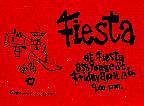
LAISSEZ PASSER
|
In the Queen West scene I was a mere hanger-on -- not an artist, no patron. Nor Dish. No: I was one of those sober gay activists suspected (and rightly so) of impatient disdain for stylish sexual ambiguity.
But Body Politic types could be excused their occasional twinges of politically correct categorizing. Battling state censorship in court (as you'll see endlessly in my memoir), we had become a cause célèbre among artists -- many not "gay," if truly queer -- equally committed to freedom of expression. They had to fight for it too.
They joined our fight in strength. At a benefit on the night of January 3, 1979, second day of TBP's first trial (of three), a slew of Queen Street artists performed, their works sharp with political point. Felix Partz and A A Bronson spoke to slides of isolated body parts, dissecting the "Anatomy of Censorship." The Clichettes roared out "You Don't Own Me" -- ending sprawled, fists pounding the stage.
And, in fact, a few of us at TBP had ourselves come to doubt strategic attachment to fixed categories of the erotic. We had learned a thing or two on Queen West.
I certainly did. And I still have what feels my laissez passer to the demi monde: an invitation in Sandy Stagg's own hand: "Here are a couple of invites to the opening of my new uptown spot. Hope you can come."
Next: Sky Gilbert & Buddies in Bad Times
Go back to Diva Diaries / Contents page
Or to My home page
Go to Promiscuous Affections / Introduction
Or to specific chapters noted above:
1977 -- for The Body Politic's serendipitous discovery of Queen West
1978 -- for the Queen West scene
1979 -- for The Body Politic's first trial & that Jan 3 benefit bash
1982, Part 2 to 1985, Part 1 -- for The Body Politic's continuing trials
1984, Part 2 -- for Cornelius (formerly the Chimney)
* Lyrics for "Don't Play with TNT": Big Linda Records © 1992
This page: http://www.rbebout.com/divas/dcarole.htm
January 2001 / Last revised: June 1, 2003
Rick Bébout © 2001-2003 / rick@rbebout.com

